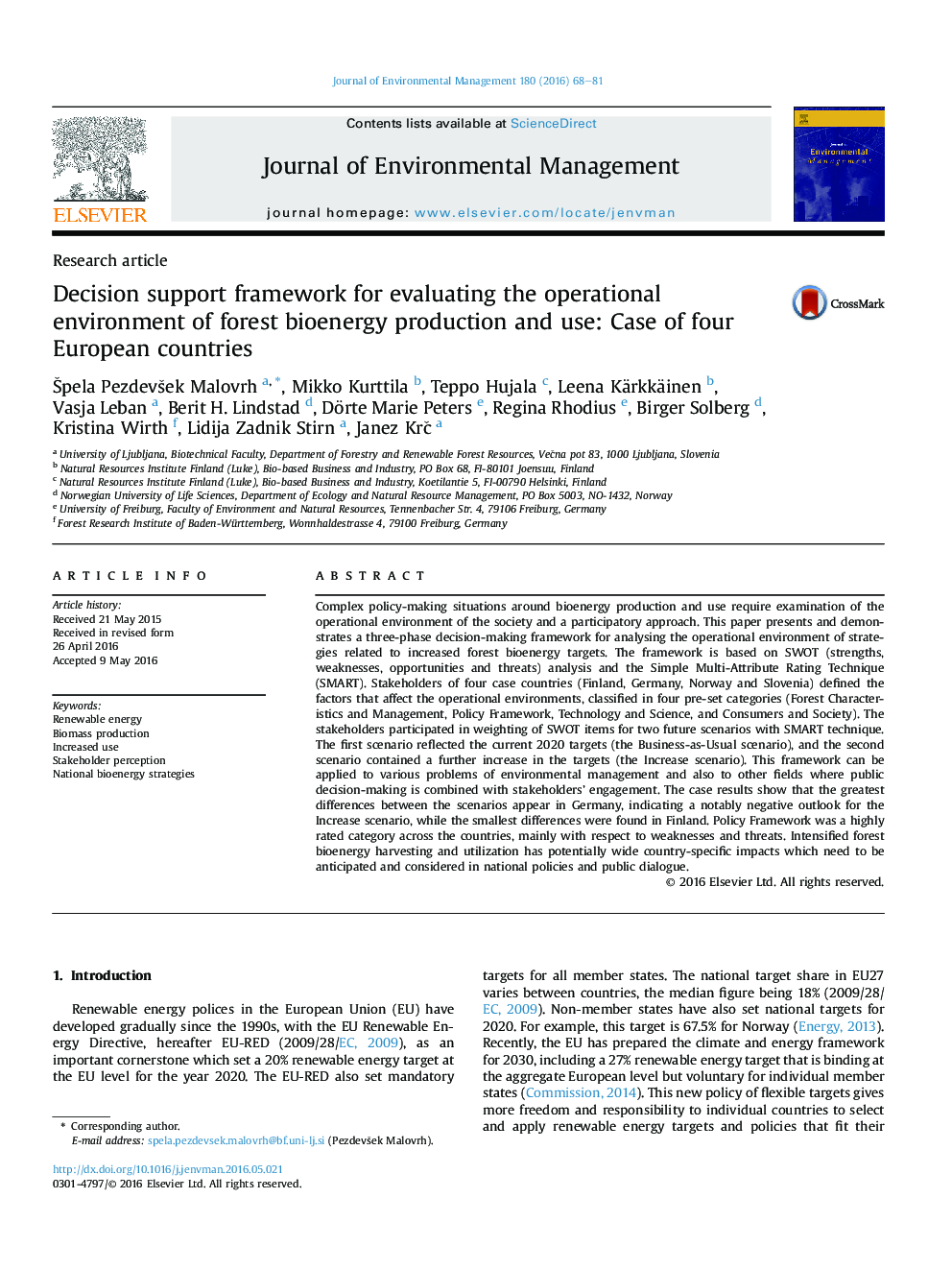| Article ID | Journal | Published Year | Pages | File Type |
|---|---|---|---|---|
| 7479944 | Journal of Environmental Management | 2016 | 14 Pages |
Abstract
Complex policy-making situations around bioenergy production and use require examination of the operational environment of the society and a participatory approach. This paper presents and demonstrates a three-phase decision-making framework for analysing the operational environment of strategies related to increased forest bioenergy targets. The framework is based on SWOT (strengths, weaknesses, opportunities and threats) analysis and the Simple Multi-Attribute Rating Technique (SMART). Stakeholders of four case countries (Finland, Germany, Norway and Slovenia) defined the factors that affect the operational environments, classified in four pre-set categories (Forest Characteristics and Management, Policy Framework, Technology and Science, and Consumers and Society). The stakeholders participated in weighting of SWOT items for two future scenarios with SMART technique. The first scenario reflected the current 2020 targets (the Business-as-Usual scenario), and the second scenario contained a further increase in the targets (the Increase scenario). This framework can be applied to various problems of environmental management and also to other fields where public decision-making is combined with stakeholders' engagement. The case results show that the greatest differences between the scenarios appear in Germany, indicating a notably negative outlook for the Increase scenario, while the smallest differences were found in Finland. Policy Framework was a highly rated category across the countries, mainly with respect to weaknesses and threats. Intensified forest bioenergy harvesting and utilization has potentially wide country-specific impacts which need to be anticipated and considered in national policies and public dialogue.
Related Topics
Physical Sciences and Engineering
Energy
Renewable Energy, Sustainability and the Environment
Authors
Å pela PezdevÅ¡ek Malovrh, Mikko Kurttila, Teppo Hujala, Leena Kärkkäinen, Vasja Leban, Berit H. Lindstad, Dörte Marie Peters, Regina Rhodius, Birger Solberg, Kristina Wirth, Lidija Zadnik Stirn, Janez KrÄ,
